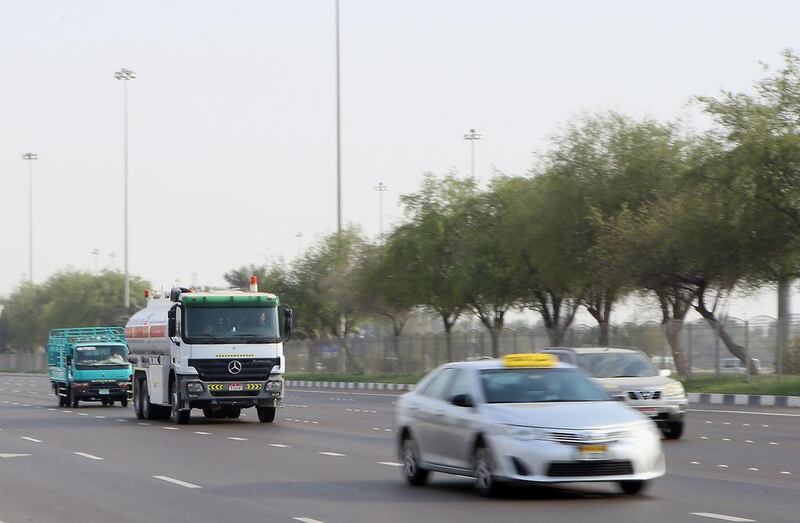ABU DHABI // Transport experts are divided over a recommendation to reduce the speed buffer from 20kph to 10kph for certain vehicles.
Last month, the Federal Traffic Council said it would like to see a reduction to the buffer for heavy goods vehicles, buses and taxis.
A gradual reduction of the buffer was suggested in June 2014, with experts believing that reducing the buffer by 10kph, coupled with more training for drivers in hazard perception, would help to reduce the risk of accidents.
Abdullah Al Sabbagh, chief executive of Cars Taxi group, backed the plan, but suggested more in-depth traffic studies before considering a reduction.
“It can reduce the number of accidents, but some customers don’t want it and would tell the driver to hurry,” he said.
He said that officials needed to study the reason the majority of accidents occurred before making a decision.
“Are most accidents due to excessive speed, sudden lane changes, tailgating or maybe caused by burst tyres?” asked Mr Al Sabbagh, a former general manager for TransAD. “Unlike a normal car, a taxi is driven 550 kilometres a day, and for a double shift, more than 800km a day.”
Sonal Ahuja, regional director of PTV Group, which provides software and consultancy services for traffic and transport planning, said: “The 20kph buffer should be lowered as it is too high compared to what is allowed in most European countries. In my technical opinion, I think 10 per cent plus 2kph is what should be allowed here. That means, for example, motorists will not receive a fine for travelling up to 112kph in a 100kph zone.”
Authorities should enforce the same speed limit by vehicle class, excluding taxis, Mr Ahuja said. “On the side of the road, you’ll see a circle with the image of a car or a lorry, and people know what the speed limits are,” he said. “But the definition of taxis these days is not binary. You have licensed taxis, limousines and private hire services such as Uber and Careem.
“An Uber driver, for example, may be registered with Uber, but he or she can drive the car for personal use. How will you differentiate a taxi from a personal vehicle?”
All vehicles should be subject to the same buffer if there is a desire to set one and to make it public knowledge, said Simon Labbett, project director at Sheida, an Omani road safety standards body.
“But there is no need to publish an enforcement speed,” he said. “The speed limit is the limit posted by the sign and motorists only need to factor on that speed.”
In the UAE, speed limits do not incur a penalty until 140kph on a motorway, which leads to the 140kph becoming the de facto speed limit, Mr Labbett said.
“It increases the range of speeds of vehicles travelling along the road,” he said.
“With a wide range of speed differential, it’s well established that there’s an increased likelihood of collision risk.”
rruiz@thenational.ae






